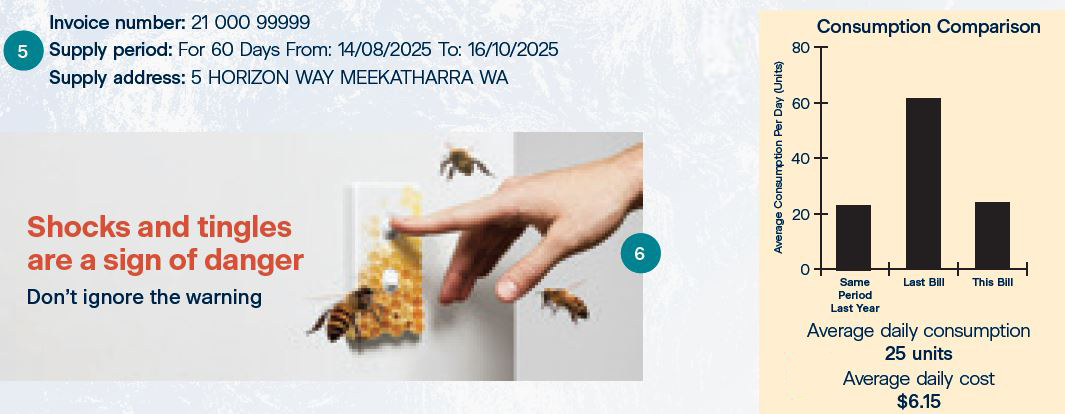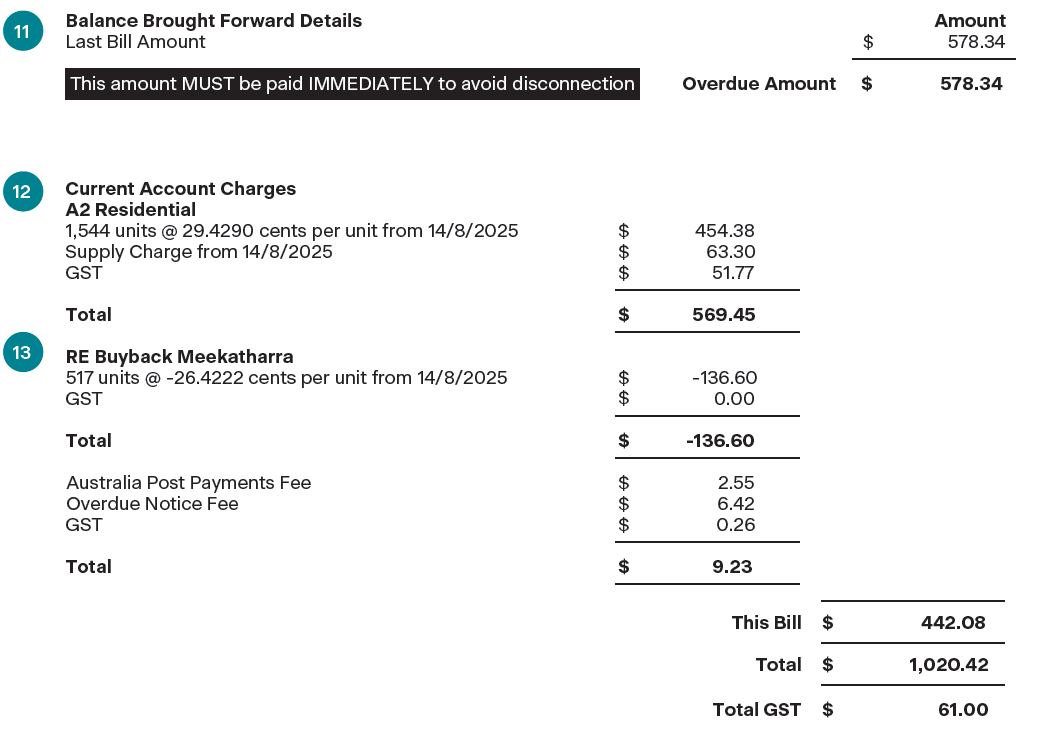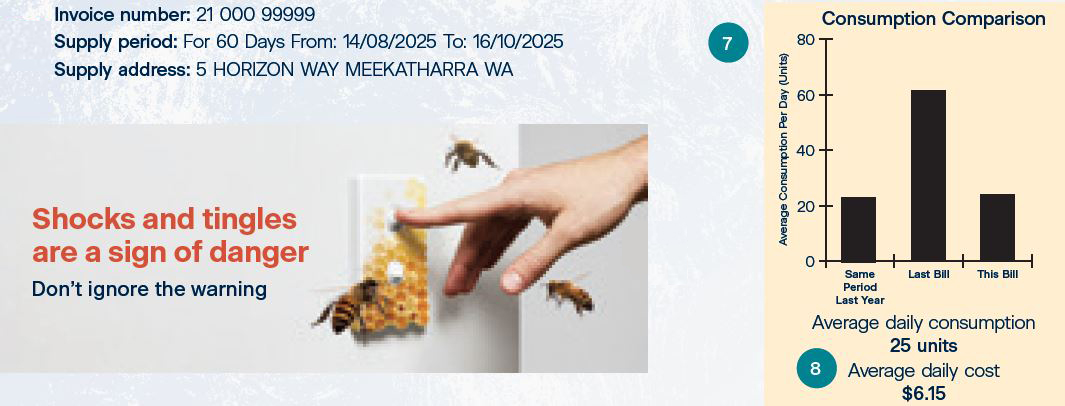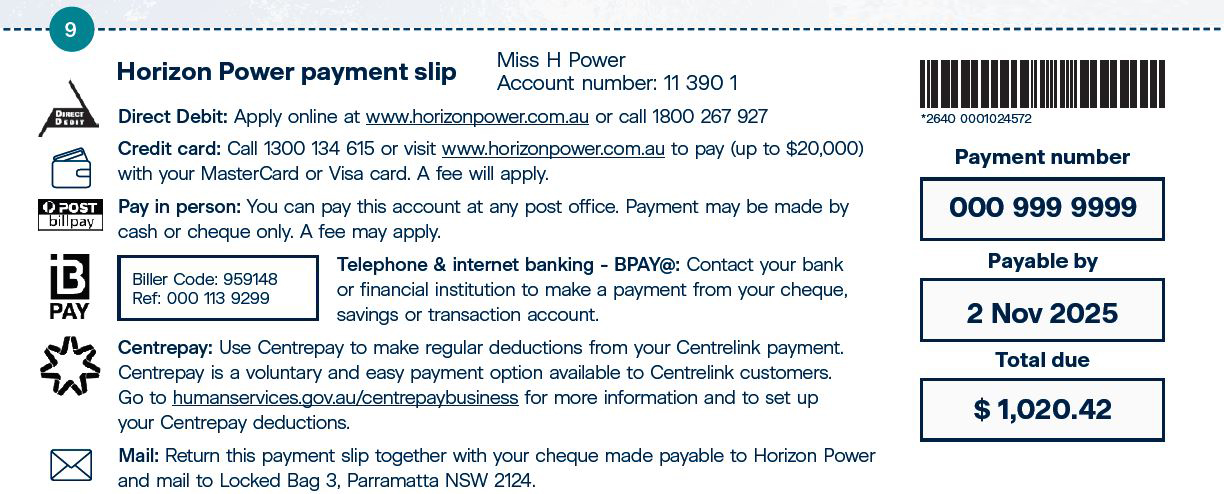Understand your bill
Each year, the WA State Government reviews our fees and charges and sets the price that our customers pay for electricity, known as ‘tariffs’. If your bill is like most of our residential customers’ bills, it’s made up of two main parts:
- A fixed charge (the cost to deliver power to your home)
- A variable charge (the cost for each unit of electricity you use)
When you live in regional and remote areas, it costs more to deliver power to your home than the price that you are actually charged - but the WA State Government subsidises the price. In 2025–26, that subsidy will be $242 million for regional WA — an average of $5,034 per customer connection.

About your energy bill
Knowing about the different parts which make up your energy bill can be helpful if you’re trying to save energy and manage your household budget.
- What are my account details?
- How do I read and understand my account summary?
-
What are my supply details?

- How much energy did I use?
- How do I pay my bill?
- Where is my meter reading information?
-
Where can I check my tariff, any rebates or solar buyback credits?

Here's a closer look at these charges:
Account charges
- Tariff type: the amount you pay for the electricity used is based on what tariff type you are on. This bill shows the customer is on an A2 Residential tariff.
- Tariff charges: the number of electricity units used and (tariff rate) cost per unit in this billing period. GST is added as a separate line item.
- Supply charge: the charge to supply the electricity to your supply address. This is charged on a daily basis, whether you use electricity on that day or not.
Products, credits and adjustments
- Buyback (solar credit): if you have solar installed, this shows a credit for any units of solar electricity that have been fed back to the network as shown in this example. We buy each unit of electricity at a set price. If your buyback scheme has an on-peak and off-peak price, or if you receive your bill between seasons, you will see multiple rates listed here.
- Rebates or subsidies: if you receive any concessions, rebates or subsidies, this will appear here as a credit on your account and shown with a minus sign (-).
- Fees: any fees charged to your account will appear here. Example of fees include paper bill, overdue notice, Australia Post payment and credit card payment.
-
How is energy measured?
You may have noticed on your bill that you are charged per ‘kWh’ for electricity – but what does that even mean? It can be pretty tricky to wrap your head around some of the energy jargon out there, but taking the time to learn will help you understand your bill.
What does ‘kWh’ stand for?
![]()
Is your bill higher than you were expecting?
Seasonal changes, new appliances, visitors in the household or a recent renovation are just a few of the factors which can cause a spike in your energy use and impact your bill.
Need more time to pay? We're here to help.
Whether you need a bit more time for one bill payment or you’re finding it hard to get on top of your bills in the longer term, we have a range of options to help you get back on track.
Horizon Power acknowledges the Traditional Custodians throughout Western Australia and their continuing connection to the land, waters and community. We pay our respects to all members of the Aboriginal communities and their cultures; and to Elders past, present and emerging.
Aboriginal and Torres Strait Islander people are advised that this website may contain images, names or voices of deceased people.





